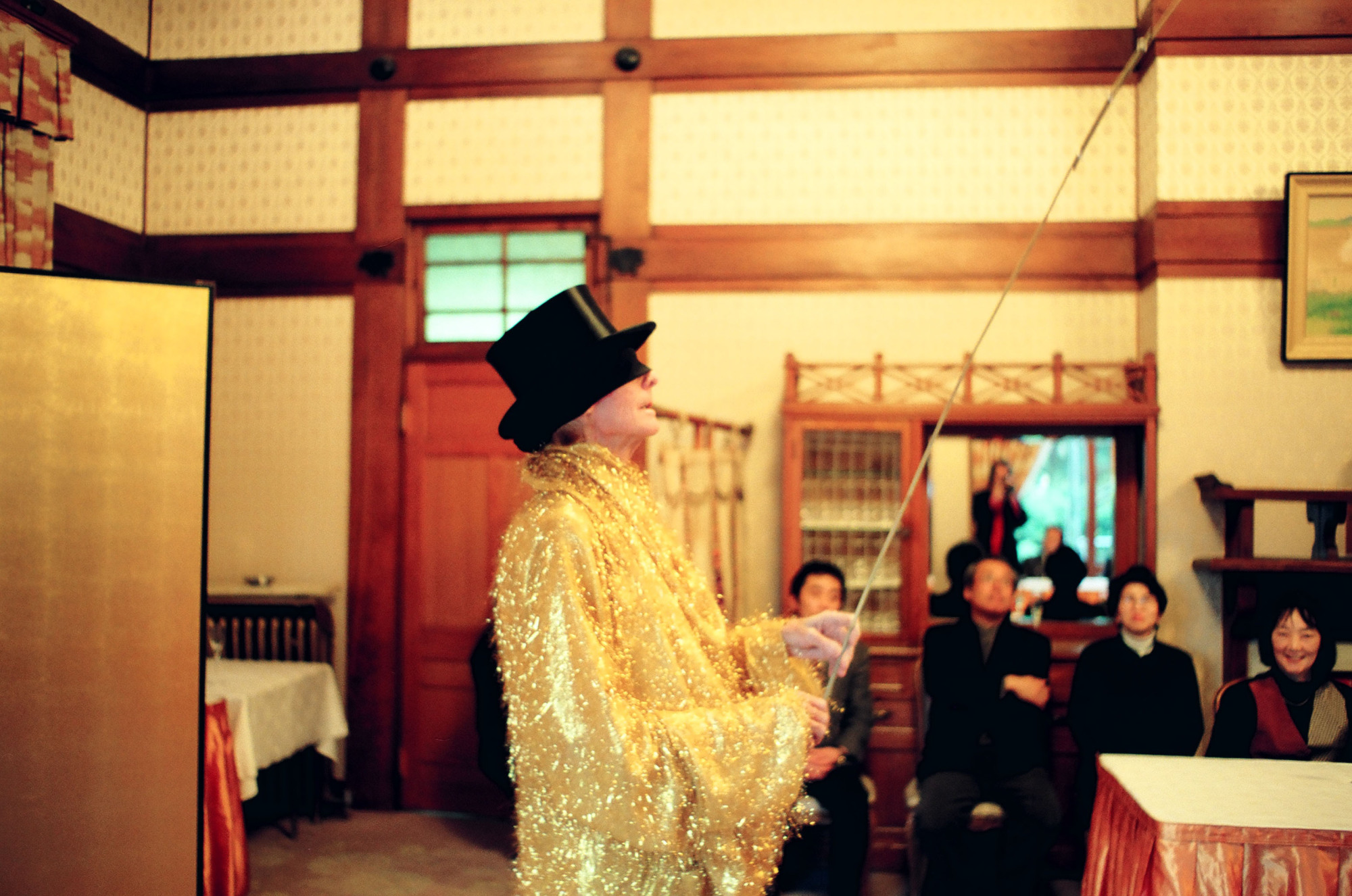I first met James Lee Byars in Kyoto in early 1967 and, at his invitation, participated in his "performance." At the time I didn't know that he'd been back and forth between Japan and the U.S. for nearly a decade already. I was also unaware that he had already done one-man shows and taken part in independent exhibitions. Nor did I have any inkling that Byars would go on to become "one of the most mythic artistic figures" of the 20th century, as the Museum of Modern Art in New York called him in presenting his art and performance works in 2014.
As Shinobu Sakagami writes in her recently published "James Lee Byars: Days in Japan" (Floating World Editions), Byars sharpened his sensibility as "an aesthetic heretic" after arriving in Yokohama in the fall of 1958. Interestingly, it was the Japan Folk Craft Museum that the 26-year-old artist on a private painting scholarship first visited in Tokyo. There, he met its founder and director, Soetsu Yanagi, famed for advocating "beauty in everyday, utilitarian products." Yanagi directed Byars to Kichinosuke Tonomura, founder and director of a similar folk craft museum in Kurashiki, Okayama Prefecture.
More than 40 years later, Sumie Kawai, an art journalist in Berlin, vividly recalled Byars' first solo exhibition in Japan.

















With your current subscription plan you can comment on stories. However, before writing your first comment, please create a display name in the Profile section of your subscriber account page.